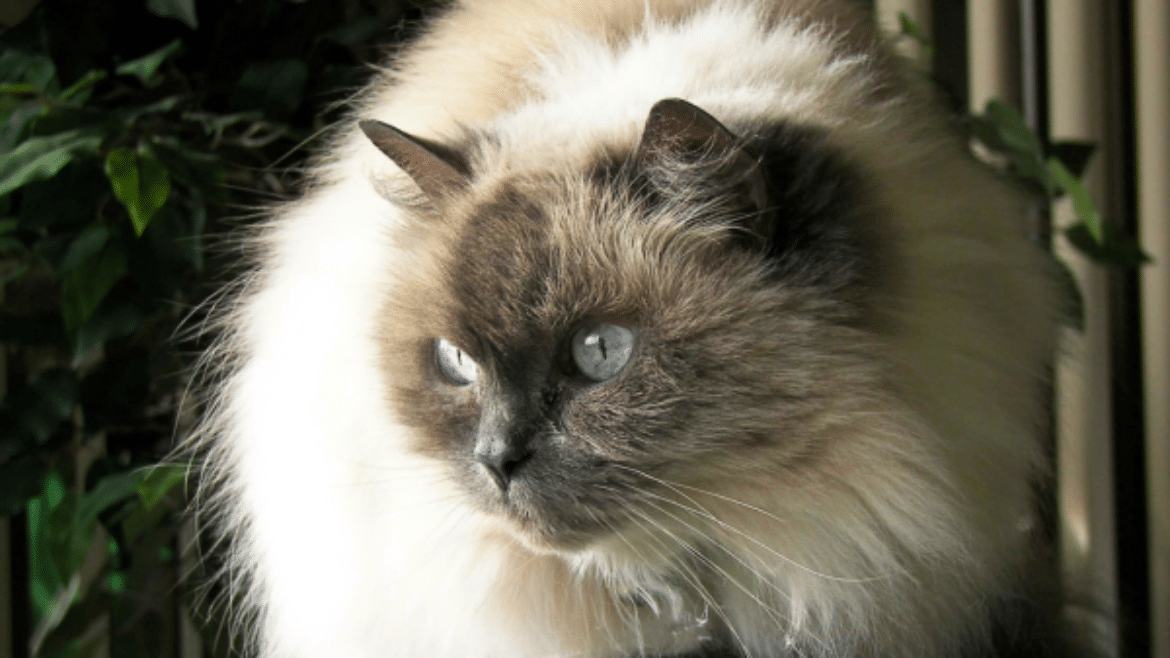FIP diagnosis: now we can treat it, how sure do we need to be? (2024)
Overview
Join us for an essential webinar tailored for veterinary surgeons grappling with the intricacies of diagnosing and treating Feline Infectious Peritonitis (FIP). Led by esteemed expert Sam Taylor, RCVS Recognised Specialist in Feline Medicine, this webinar will highlight the key clinical abnormalities indicative of FIP, decode lab findings, and address the important question of when treatment trials are appropriate.
Presenters

Dr Samantha Taylor BVetMed(Hons) CertSAM DipECVIM-CA MANZCVS FRCVS
Internal Medicine Specialist
Lumbry Park Veterinary Specialists
Sam is an RCVS Recognised Specialist in Feline Medicine, European Specialist in Veterinary Internal Medicine and a Fellow of the RCVS. She has worked in both University and private referral practice and is currently the Specialist Lead for the International Society of Feline Medicine and Clinical Board and Residency Lead at Linnaeus. She is an honorary lecturer in internal medicine at the University of Surrey and set up the FIPadvice email service with other specialists which has answered over 1200 emails about the novel treatments. She recently published a report on over 300 cats treated for FIP and continues to be involved in FIP research.
This is a transcribe of the above diagnosis webinar recorded March 2024 by Dr Sam Taylor FRCVS
In this discussion, Sam aims to provide practical tips and strategies for diagnosing FIP, a challenging task.
During the session, we will explore key clinical abnormalities, significant indicators, and how to leverage physical examinations to narrow down potential diagnoses. We will delve into the importance of lab results, the necessity of definitive tests like PCRs, and the appropriate timing for treatment trials.
In the current exciting era where most cats with FIP can be cured, ensuring a confident diagnosis remains a complex endeavour. Previously, the gravity of decisions related to euthanasia often led to cautious approaches. However, the landscape has shifted towards seizing opportunities to treat FIP early for better outcomes, while balancing the constraints of time and costs associated with extensive testing.
An illustration from the AAFP guidelines likens the diagnosis of FIP to bricks in a wall, emphasizing the need to integrate various tests to form a conclusive diagnosis. Each case presents a unique challenge, requiring a delicate balance between confirming diagnoses and avoiding unnecessary treatments. Exploring differential diagnoses for FIP reveals distinct characteristics that aid in differentiating conditions and guiding treatment decisions.
Together, we will navigate through the complexities of diagnosing FIP, striving to provide optimal care while considering the individual needs of each feline patient.
It is relatively uncommon for affected cats to appear lively when they are actually very unwell. Early FIP patients may show signs of effusion, which is typically highly cellular with degenerate neutrophils. In cases of septic peritonitis, the presence of bacteria in samples is a significant indicator, even if only a few are found after antibiotic treatment.
Effusions should be carefully examined for bacteria to rule out certain conditions. Neoplasia, a common cause of effusions, can be bicavitary and is more prevalent in older cats, though lymphoma can occur in younger patients. Differentiating between exudates and transudates can help distinguish conditions like FIP from others.
Pancreatitis, another common condition in cats, may result in small effusions that are neutrophilic and potentially higher in protein. Cats with pancreatitis may exhibit jaundice, making it an important differential diagnosis for FIP. Lymphocytic cholangitis, an immune-mediated liver condition in cats, presents chronically and without fever, unlike most FIP cases.
Cholangitis types, neutrophilic and lymphocytic, usually manifest with elevated liver enzymes, which is less frequently seen in FIP. Cats with lymphocytic cholangitis may display high protein effusions, leading to potential diagnostic challenges, although this is not a common disease.
And then we have our infectious imitators. And so things like toxoplasmosis, mycobacteriosis, which can affect multiple systems. And that’s a clue in FIP cases, the involvement of more than one organ system, but that can happen in these diseases too. They can occasionally be effusive, but that’s less common. Toxoplasmosis and mycobacteriosis, even though they are less common than FIP, can cause other signs like uveitis. If present, the protein composition of the effusions may not be entirely consistent with FIP, and cytology might reveal some organisms, though not always.
Here are some other considerations to keep in mind:
- Pyothorax is significant as it can lead to pleural effusion in young cats, but distinguishing between conditions through sampling is crucial.
- Cases of idiopathic uveitis in cats typically lack other multisystemic signs, providing a valuable clue, for example they should not have effusions.
- Exploring various differentials can help narrow down the most likely diagnosis. Think of it as putting together a jigsaw puzzle, where missing pieces can be filled in with enough information for a diagnosis.
- Utilizing signalment, clinical signs, PCR, and immunocytochemistry aids in identifying organisms for diagnosis.
- Obtaining effusion samples is more straightforward than MRI scans, so always look for fluid eg with POCUS scanning even in neurological or ocular cases.
- Consider referring to AAFP guidelines and the European Advisory Board on Cat Diseases (ABCD) for comprehensive information on FIP diagnosis and treatment.
- ABCD provides useful algorithms for decision-making in different scenarios, such as when dealing with non-specific clinical signs in the absence of effusion.
- Purebred cats are more susceptible to FIP, as indicated by research findings, although domestic short and long-haired cats also account for a significant portion of cases.
- FIP can affect cats of various ages, with a median age of 11 months and occurrences in unexpected feline demographics.
In the past, discussions often revolved around a potential second peak in the age range of eight to twelve years. However, in our study, this age range was not precisely identified. We observed various ages beyond this younger category, with a noticeable male predominance in this condition. When it comes to breeds, older studies typically mention breeds like Bengals.
Our study included more British Shorthairs and Maine Coons, but that probably just reflects the most popular pure breeds of the time. We know that British Shorthairs and Maine Coons are particularly popular, in the UK at the moment, and our study had more cats from the UK. So, purebreds all potentially have a higher risk, and amongst those, certainly British Shorthairs, we saw more of in our recent study.
Approximately 10% of our patients had a sibling or housemate with a history of FIP. Therefore, it’s important to inquire about undiagnosed diseases in other cats within the household. FIP can be challenging to diagnose as it can present differently and mimic other conditions. Common signs of FIP include lethargy, loss of appetite, and weight loss, which are consistent but not exclusive to FIP. Vomiting is uncommon, while diarrhoea is more prevalent, yet both symptoms are nonspecific.
In some cases of FIP, common signs may not always be present, but a combination of signs together can start to raise suspicion of FIP. To identify other FIP indicators in a patient, look for symptoms like fluctuating fever, abdominal swelling due to fluid or a mass, and neurological issues.
For instance, when examining a young patient with sporadic fever and reduced appetite, inquire about any issues with mobility, abnormal gait, or changes in behaviour. Additionally, check for ocular symptoms, effusions, and subtle jaundice – not intense yellowing but a slight yellow hue, as I will demonstrate shortly.
These are some of the general indicators transitioning to more specific ones.
- A comprehensive physical examination is crucial and can provide valuable insights.
- A thorough abdominal palpation is essential to detect signs of fluid accumulation or abdominal masses, which can be indicative of conditions like FIP.
- In addition to palpation, listening to the chest for abnormalities like dull heart sounds and performing percussion to identify fluid accumulation is recommended.
- Examination of the eyes can reveal important clues, especially in cases suspected of FIP.
- Brief neurological assessments, including observing gait, and checking cranial nerves, and ocular reflexes, can offer valuable information.
- Recording the patient’s weight and body condition score is essential for establishing a baseline and monitoring changes.
- Jaundice and pallor may be present in anaemic cats, with yellow-tinged mucous membranes indicating underlying issues.
- Exploring other body areas for clues before resorting to advanced imaging can aid in diagnosis and save funds.
- Searching for fluid samples and analysing biochemistry and haematology findings can provide additional diagnostic insights.
For instance, patients with neurological and ocular FIP may exhibit normal blood results, though it is less common in cats with effusive disease. Look out for specific abnormalities, such as microcytic non-regenerative anaemia and immune-mediated haemolytic anaemia can occasionally occur. Other indicators include an increase in bilirubin levels and the typical hyperglobulinemia. While a high albumin-globulin ratio above 0.8 may decrease the likelihood of FIP, its reliability varies. Focus on globulin levels rather than fixating on albumin-globulin ratios. Additionally, measuring acute phase proteins in suspected FIP cases can be beneficial for therapy monitoring, but it lacks specificity as it is also high in other conditions like infectious diseases and neoplasia.
Costs for these tests can vary significantly worldwide and even within the UK. AGP is extensively researched, while serum amyloid A may be more accessible in some regions. Although less studied, SAA can still be beneficial for treatment monitoring when AGP is not available.
AGP and SAA play vital roles in diagnosing FIP, yet they do not provide a complete picture. While elevated AGP is common in most FIP cases, some cats may have normal levels.
The distinction between wet and dry FIP should be viewed as different phases of the same disease, as the condition can progress and clinical signs change – this can also occur during initial treatment. Understanding the presence of pleural effusion is crucial, as drainage may be necessary. Utilizing ultrasound, even without extensive training, can help identify free fluid quickly in challenging cases. Ultrasound imaging has proven to be a valuable tool in diagnosing FIP.
Recent research highlights the significance of imaging cats with FIP, showcasing varied organ involvement and unexpected changes, such as hepatic, intestinal, splenic, and renal abnormalities, as well as abnormalities in the mesentery and peritoneum, emphasizing the importance of thorough imaging in FIP cases. The presence of multiple organ signs and abnormalities raises suspicion of FIP, although it is not a definitive diagnosis. It is crucial to obtain samples for further evaluation. Another recent study showed cats with FIP often have thoracic changes (even without clinical signs) but remember, ultrasound is preferred over radiography for dyspnoeic patients to prevent stress.
Post-mortem examinations on cats with FIP revealed diffuse thoracic lesions even when not the primary pathology, indicating persistent chest changes during FIP recovery, like granulomas and fibrosis. These findings add complexity to treatment, especially since cats with retroviral infections, particularly FELV, are more prone to FIP development.
Effusion testing is invaluable, but examining samples in-house before sending them off is recommended for prompt decision-making. Smears can reveal essential information like typical cytology, bacteria presence, or neoplastic cells, aiding in treatment decisions. Checking the albumin-globulin ratio can help exclude FIP, guiding treatment initiation based on the results.
Additional tests such as PCR or immunofluorescence can be sent for further analysis, but initial in-house evaluations can swiftly determine FIP likelihood. In cases without effusions, fine-needle aspirates (FNA) can provide valuable information, including cytology or PCR for coronavirus detection. When sampling, ensure minimal ultrasound gel, appropriate needle size, and consider aspirating back on the syringe for lymph nodes or spleen but not necessarily for kidneys or liver. Check a slide in-clinic before you send away and confirm its cellular nature before waking the patient up. This process can sometimes provide a diagnostic sample upon repetition. However, lymph node aspirates are often non-diagnostic. If there are suspicions of pathology in other organs, it is advisable to sample them simultaneously.
Before selecting tests that may not alter the diagnosis, it is essential to consider their significance. For instance, running serum protein electrophoresis in suspicious FIP cats with high globulins may not always be beneficial. FIP cats commonly exhibit polyclonal gammopathies, while monoclonal gammopathies are rare, but do occur. Hence, the value of certain tests in altering the diagnosis should be pondered upon.
Coronavirus serology is another test that is sometimes misunderstood and overused, especially as part of FIP panels. While high coronavirus serology is common in FIP cases, negative titres can also be present in sick or neurological cases. Testing effusions for coronavirus serology may not provide valuable insights, as per recent AAFP guidelines recommending against overall antibody testing for FIP diagnosis.
It is crucial to assess the usefulness of these tests, as misinterpretation can lead to severe consequences, as seen in cases like the Sphinx cat treated for FIP based on coronavirus serology despite not having the disease. Evaluating the need for further tests after imaging, fluid sampling, and other diagnostic procedures can help in determining the suspicion level for FIP in a patient.
In certain scenarios, treatment may be considered once other potential causes have been ruled out as much as possible. For instance, if a young purebred cat shows signs of abdominal effusion with high protein levels and consistent mixed cell cytology, without signs of sepsis or neoplasia, the decision to wait for coronavirus PCR testing before starting treatment depends on the specific case. In most cases, it is reasonable to initiate treatment at this stage, but a minimum level of diagnostics, such as cytology of the abdominal effusion, should be completed beforehand. Factors like cost and the cat’s condition should also be taken into account, especially if the cat’s health is deteriorating rapidly. Monitoring the cat’s response to treatment with objective measures, such as assessing fluid levels or neurological exams, is essential. While confirming the presence of coronavirus through PCR testing is ideal, the decision to wait for these results should be based on whether it will impact the treatment plan. Understanding the availability and usefulness of tests like immunocytochemistry can provide valuable confirmatory information and may be worth discussing with the laboratory for further guidance. Sometimes, alternative testing methods can be more cost-effective than PCRs. In Australia, many people opt for this test, but only a few labs in the UK offer it. Availability varies in other countries, but FNAs can be tested. Multiple FNAs from a large lymph node can be combined in saline until the sample becomes cloudy and then submitted. This approach can be a cost-effective option, especially for non-invasive diseases.
We have mentioned PCR several times, and coronavirus PCR can be performed on various samples, including FNAs. It is essential to consult with the lab to ensure the correct sample is sent. Running PCR on blood is not recommended due to the risk of false results, but other samples are suitable. While false positives are rare, it is possible to detect coronavirus in cats’ organs without FIP, usually in small numbers and quantities. Conversely, false negatives can occur if there are insufficient infected cells, such as in a large effusion that contains few cells, leading to a negative PCR result. Negative PCRs can also occur in CSF samples with inadequate virus amounts for detection. No test is flawless, and additional factors must be considered. For instance, if a cat shows signs of FIP despite a negative coronavirus test result, treatment should continue assuming a false negative.
Various PCR options are available, including standard PCR, quantitative PCR (QPCR), and mutation-detection PCR linked to FIP-associated mutations. Quantitative PCR is preferable as it indicates the virus quantity, aiding in diagnosis. Certain mutations detected by the gene mutation PCR are not exclusive to FIP cats, and it is suggested they are mutations allowing the virus to spread systemically, not specifically cause FIP. However, relying solely on these mutations is not advised, making quantitative PCR the recommended choice. Evaluating the value of each test and taking a systematic approach is key. Assessing if the cat has clinical signs and physical examination findings consistent with FIP, matching initial test results to the diagnosis, examining effusion samples for diagnostic clues, and conducting further assessments based on the findings are crucial steps in the diagnostic process. Additional testing may be required in some cases, depending on the cat’s health status.
If these results are going to impact our actions, confirmatory tests will be crucial. These tests might involve identifying coronavirus in consistent lesions with PCR or other immunocytochemistry or immunohistochemistry methods. The question arises: do we require additional tests beyond those mentioned on this slide? Tests like serum protein electrophoresis might not heighten our suspicions.
Should we conduct AGP and coronavirus serology tests? AGP could be beneficial for monitoring treatment response, a topic we will cover in our treatment lecture. However, in initial diagnoses, it’s unlikely to be a test I would wait for before seeking a confirmation, for instance, looking for an effusion. Consider this question and following a logical approach will hopefully guide you effectively.
To exemplify, the testing levels and confidence in diagnosis will vary from case to case, as illustrated by a few case scenarios. Freddie, with a predominant effusion, underwent effusion analysis due to cost limitations but did not have a PCR test.
Arthur exhibited a pleural effusion and underwent PCR testing, yet treatment commenced promptly due to significant deterioration. Leo, a non-effusive FIP case, had blood work and an abdominal mass sampled but did not undergo further testing.
A complex case like Batten required a splenectomy, histology, and immunohistochemistry for a diagnosis due to the challenging nature of the case. Conversely, Molly, with ocular changes, only had blood work and clinical signs, opting out of additional testing, as the owner did not pursue it.
Each case may necessitate a different diagnostic pathway. Despite some cases having incomplete investigations, all these cats were treated and recovered, presumptively with FIP.
Thank you for your attention. Consider joining ISFM if you are passionate about all things feline.




